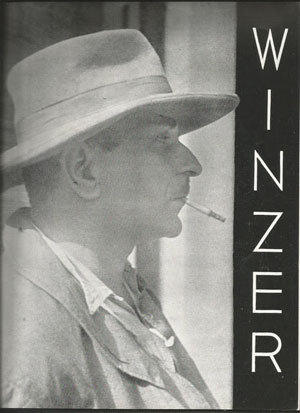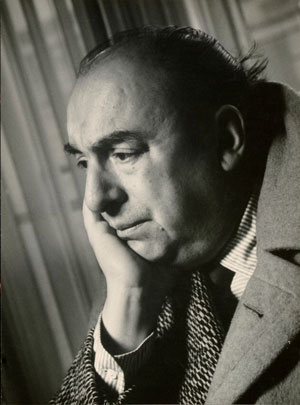When winds of Modernism blew into 1920s’ Ceylon
View(s):- The arrival of Charles Winzer and Pablo Neruda kickstarted Colombo’s art scene that laid the groundwork for the ‘43 Group
By Ismeth Raheem
The decade after the First World War saw an important phase in the history of the contemporary art world; the birth of Cubism, the most influential development in 20th century art. Other art movements such as Surrealism, Expressionism and Fauvism followed soon after in the various European urban centres.
The island of Ceylon meanwhile, witnessed the arrival of three personalities who would play a vital role in the development of the modern art movement: Charles Freegrove Winzer, Pablo Neruda and Lionel Wendt.
Charles Winzer (1886-1940), born in England to Polish-German family trained as an artist, print maker and lithographer. Living in the artist colony on the Left Bank in Montmartre, Paris, he was in the company of some of the leading painters of that generation, the renowned Henri Matisse (1869-1954) and Amadeo Modigliani (1884-1920).

Charles Winzer
Winzer who had served in the French Red Cross during the war had been arrested and interned at the Rueben military camp in Berlin for three years but continued to paint and exhibit his work there.
He thus had a deep insight into the current art scene in Europe when aged 35, he arrived in Colombo on January 16, 1921, to take up the post of Inspector of Art in the Government’s Education Department. It was in Sri Lanka that he found material that best suited his talents.
Lionel Wendt who counted him as a close associate and friend found him an indispensable and inspiring teacher. Wrote Wendt: “Winzer’s most valuable influence was in the schools. He knew that a child’s vision and individuality of its expression were qualities to be preserved at all cost.
“He effected the change from dreary magazine imitation, the wilderness of the cube, the pyramid and the sun- helmet to exciting graphic expression and communication by turning his attention first of all to the teachers. By talk, by demonstration and by example, he showed them that art was not a school “subject” but an exhilarating way of life.”
Organising exhibitions of the work of young talented artists assured him of a privileged place in society. It was Winzer who kickstarted Colombo’s art scene by inviting Geoffrey Beling, George Keyt and Justin Deraniyagala who were in their 20s to exhibit their work – well over a decade before the founding of the “43 Group” in 1943.
About the same time, the fortuitous arrival of Pablo Neruda (1907-1973) in 1929 was the catalyst for a moribund Colombo society. Appointed as Chilean Consul early in 1929 at the age of 24, Neruda’s stint in the foreign service in Asia from 1927 to 1932 took him to Rangoon, Calcutta, Colombo, Singapore and Batavia. Neruda was later appointed to the prestigious post of Chile’s Ambassador in Paris.
A leading member of the Chilean Communist Party for many years Neruda, (his real name was Neftali Ricardo Reyes) was the party’s frontrunner before the 1970 elections in Chile. With his support, his comrade Salvador Allende was selected the Presidential candidate. Acclaimed as one of Latin America’s leading poets, Neruda won the Nobel Prize for Literature in 1971.
In his “Memoirs” he writes of his days in Colombo - “which provided relative relief and a congenial languor from the voluptuous and volcanic life-styles of the other places.”
Neruda’s “seaside chalet” -No. 56, 42ndLane, Wellawatte, was a hive of artistic and literary activity where Winzer, Wendt, the architect-to-be Stephen Andrew Boyd and the artist George Keyt used to meet to discuss art, literature, music and poetry .
“I lived in a cluster of houses, among people and trees and a noble perspective: pavilions of passional leafage, roots breaking the subsoil, plants bladed like oars, immediate coconut palms; and there in the midst of a spindrift of verdure, I moved with my sharp-pointed hat, my heart, a pure fiction, my stride heavy with splendors.”
“Lionel Wendt’s return from England after his studies in law transformed Colombo’s artistic landscape. Wendt returned with French art books and journals which helped refine the taste of local artists and did much to promote and establish an avant-garde artistic circle.
“I found that the pianist, photographer, critic and cinematographer Lionel Wendt was the central figure of the cultural life torn between death rattles of the Empire and a human appraisal of the untapped values of Ceylon.
Lionel Wendt, who owned an extensive library and received all the latest books from England, got into the extravagant and generous habit of every week sending to my house, which was a good distance from the city, a cyclist loaded down with a sack of books. Thus, for some time I read kilometres of English novels, among them Lady Chatterley’s Lover, published privately in Florence” (from Neruda’s Memoirs).
Winzer founded the Ceylon Art Club by 1928. Recognising great potential in three young artists – George Keyt (1901-1993), W.J.G. Beling (1907-1992) and Justin Deraniyagala (1903-1967), he gave them the space to exhibit, building public appreciation of their work. The three went on to stamp their authority on the arts scene following the founding of the “43 Group”.
In one of the first exhibitions dedicated to the work of Keyt and Beling held in January 1930 at the Ferguson Hall, in the preface to the catalogue Winzer wrote;

Pablo Neruda
The paintings of Beling and Keyt represent what is most vital in Ceylon Art, in tendency as in achievement. There is no jugglery here but a sincere effort to construct and to express -and all effort as successful as any we may see in Europe
In an exhibition held in January 1930 by the Ceylon Art Club, Winzer promoted not only the work of the local artists but also encouraged the new Indian art movement of the Bengal School (Shantinikan) and other representatives from India to exhibit their work here in Colombo.
In addition to his role as an Inspector of Art, in 1928 Winzer was appointed Acting Archaeological Commissioner, a post he held for a year. Reappointed in 1930, it was under his administration that the department’s coordinating office was moved from Anuradhapura to Colombo
Since 1890, the Department of Archaeology, then under H.C.P.Bell (its first Head), had been in relatively good shape despite funding being much curtailed to continue the conservation work involved. The situation was so bad at times that Bell had to deploy prisoners from the Anuradhapura jail.
But Neruda had misgivings about Winzer and was very critical of his offhand approach as the Head of Archaeology ;
“I went with him on one of his official expeditions, it was an eye-opening experience to me. So called “polite society” which paraded in its finest clothes and jewels in Colombo’s exclusive clubs, two famous snobs competed for leadership. One was a phony French nobleman Count de Mauny, who had a group of devotees. The other was an elegant and devil may-care Pole, my friend Winzer who dominated the few fashionable salons there were. This man was extremely witty, quite cynical and a source of knowledge about everything in the world. He had a strange profession “preserver of the cultural and archaeological treasure”- and going along with him on one of his excavations was an eye opener to me.
“Excavations had brought to light two magnificent cities the jungle had swallowed up: Anuradhapura and Pollonaruwa. Pillars and corridors gleamed once again in the glorious sun. Naturally, everything excavations had brought to light was carefully packed and went on its way to the British Museum London.
“My friend Winzer was pretty good at his work. He went to remote monasteries and to the enormous satisfaction of the Buddhist monks, he loaded the official van with marvellous stone sculptures, thousands of years old, that would end up in England’s museums. The look of contentment on the saffron-garbed monks was something to see, when Winzer would leave them painted celluloid Buddha images made in Japan as replacement for their own antiques. They would look them over with reverent eyes and set them upon the altars from which the jasper and granite statues had smiled for centuries. My friend Winzer was an excellent product of the Empire that is an elegant short changer.”
This facet of Winzer and his behaviour has hardly been brought to light and might give an entirely different aspect of this personality who played a pivotal role, a century ago in the country’s art history.
Winzer left around the late1930s, first to Venice, and died a few years later in 1940. A year after his death, the Winzer Memorial was established for his contribution to the arts and memorial art exhibitions were held thereafter.
In sharp contrast to Neruda’s disparaging remarks, Wendt who was probably the closest companion Winzer had in this country had an entirely different opinion:
“Winzer’s favourite medium was tempera. Later he evolved a method by using materials available locally. He drew incessantly –pencil, charcoal, sanguine, brush, pastel. His love for this country and its peoples everywhere apparent in his work. No one before him and after him, no one yet has translated into paint the colour harmonies peculiar to Ceylon, and the grace of posture and movement natural to the Sinhalese and the Tamil. He accurately observed and faithfully interpreted the greys and lilacs of a wewa in the Eastern provinces, the lush green of the low country, the blinding sun on Jaffna sands and the deep, subtle richness of every shade of brown and golden skin. The sincere painter and student found in Winzer an understanding critic who could appreciate another’s outlook however different was from his own, a sympathetic friend and a most amusing companion; but the panjandrums of the local art circle and societies feared his honesty, his sincerity and his ability.”
Searching for an ideal partner? Find your soul mate on Hitad.lk, Sri Lanka's favourite marriage proposals page. With Hitad.lk matrimonial advertisements you have access to thousands of ads from potential suitors who are looking for someone just like you.


